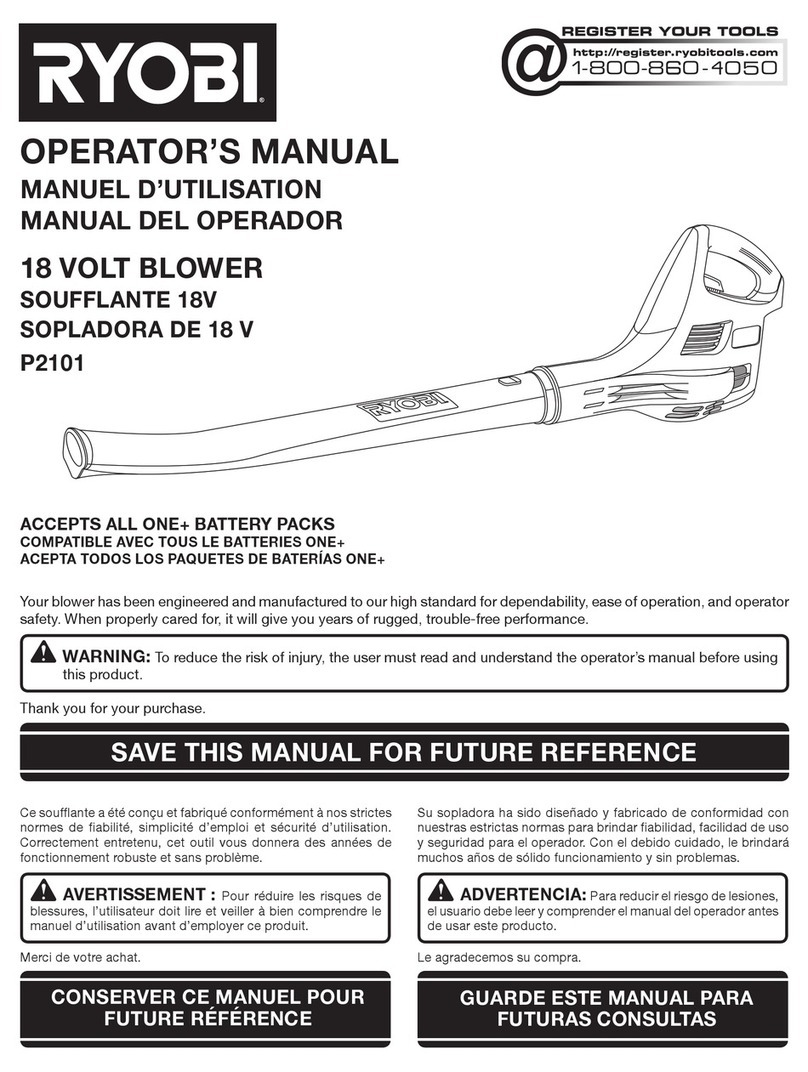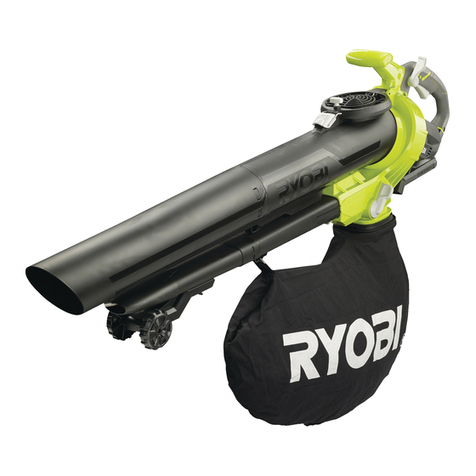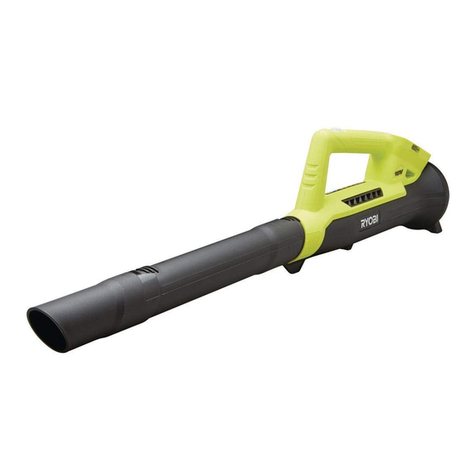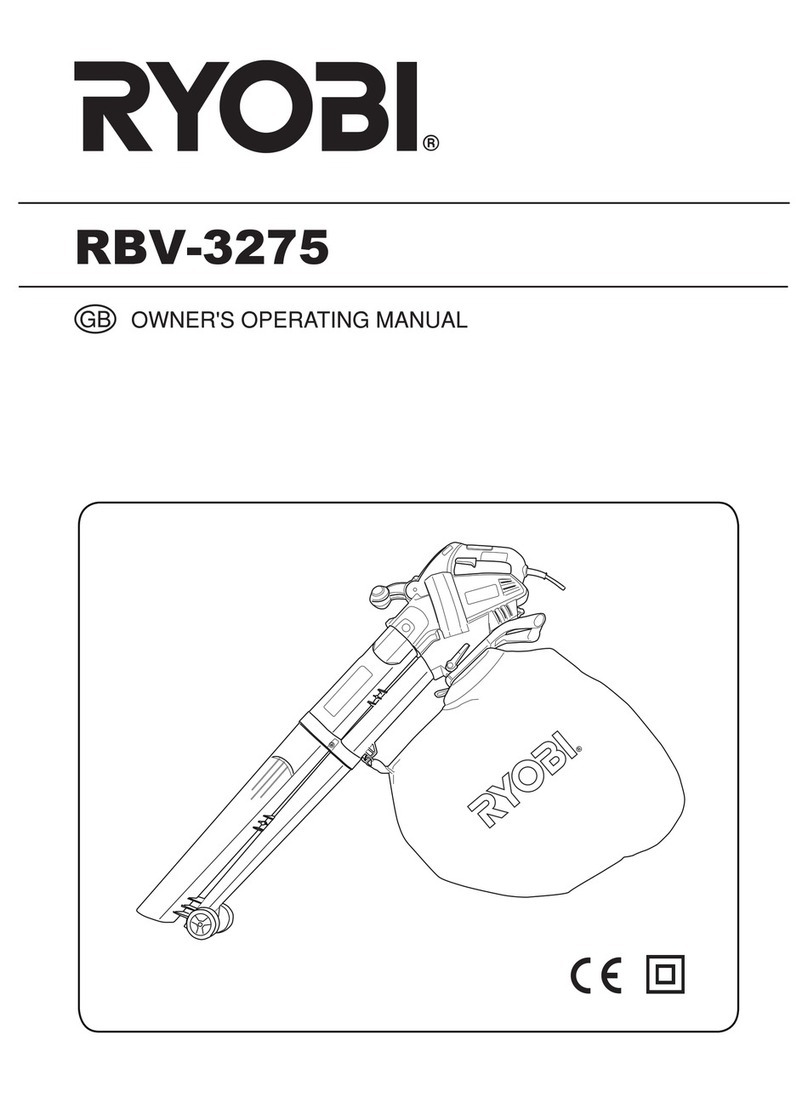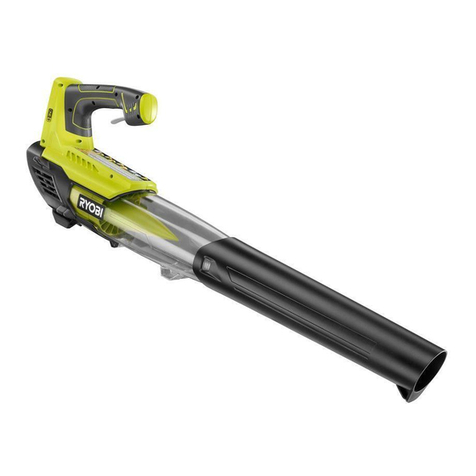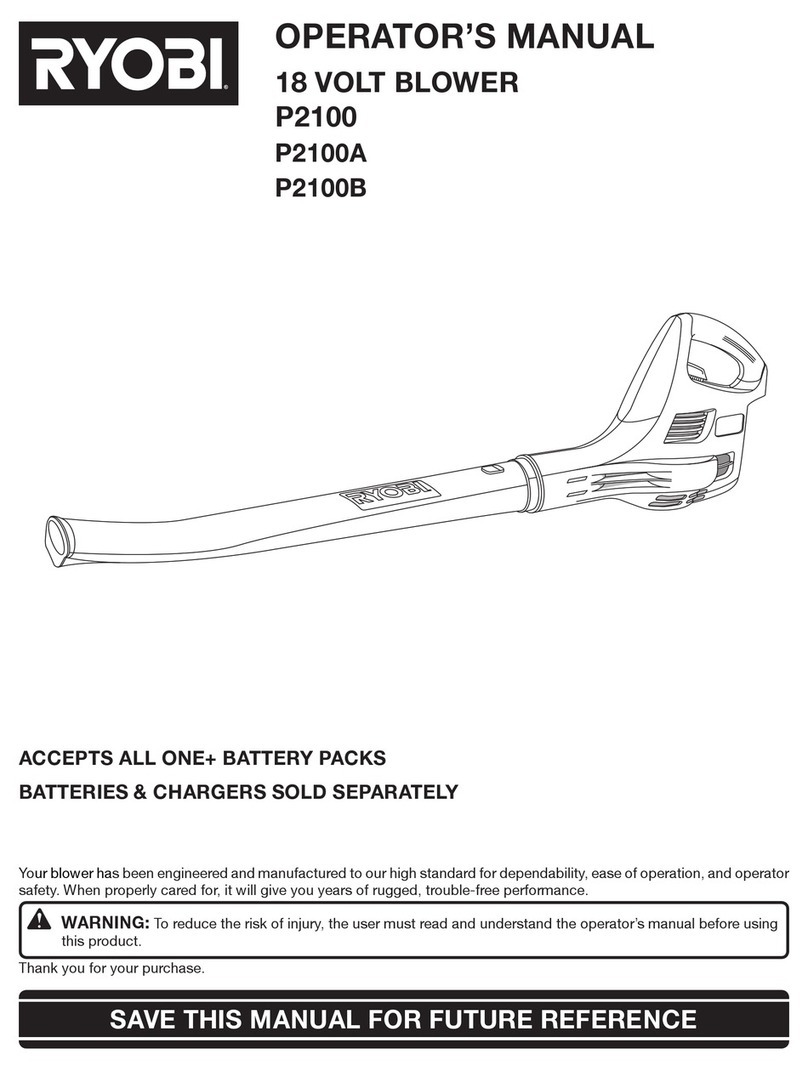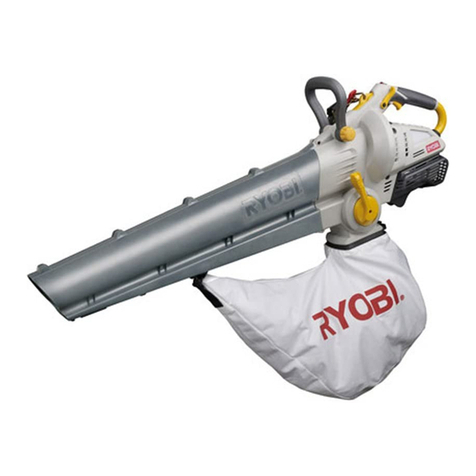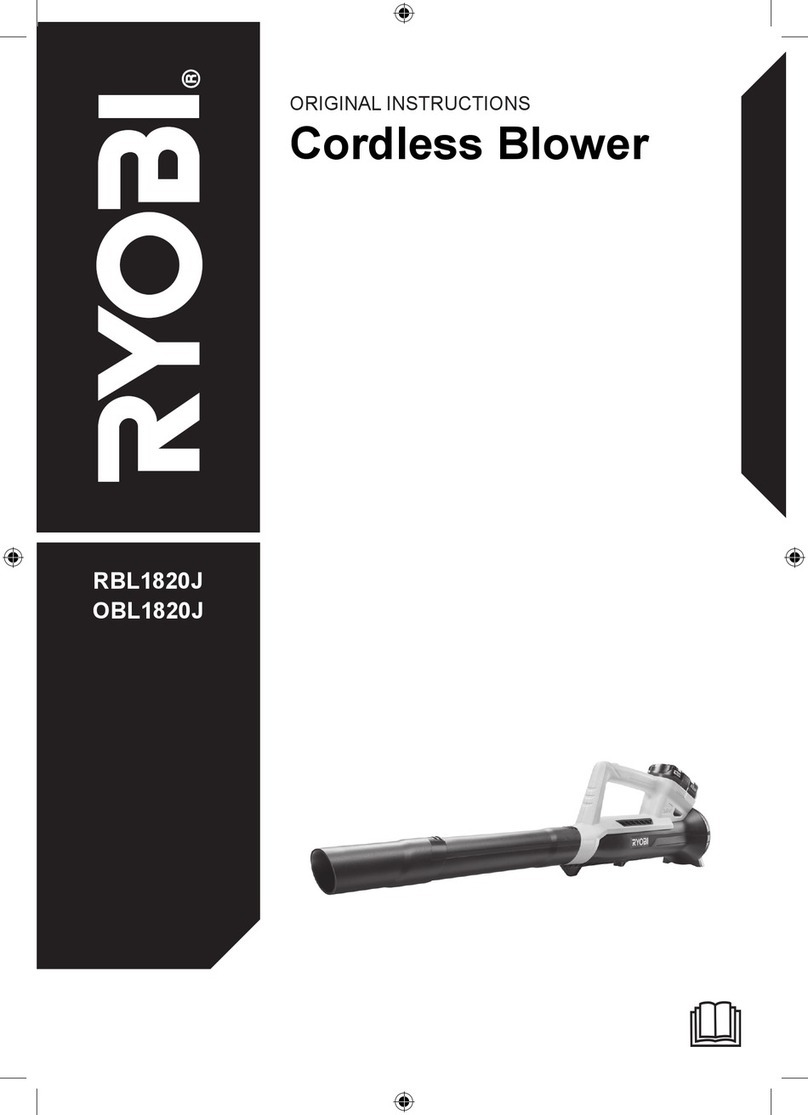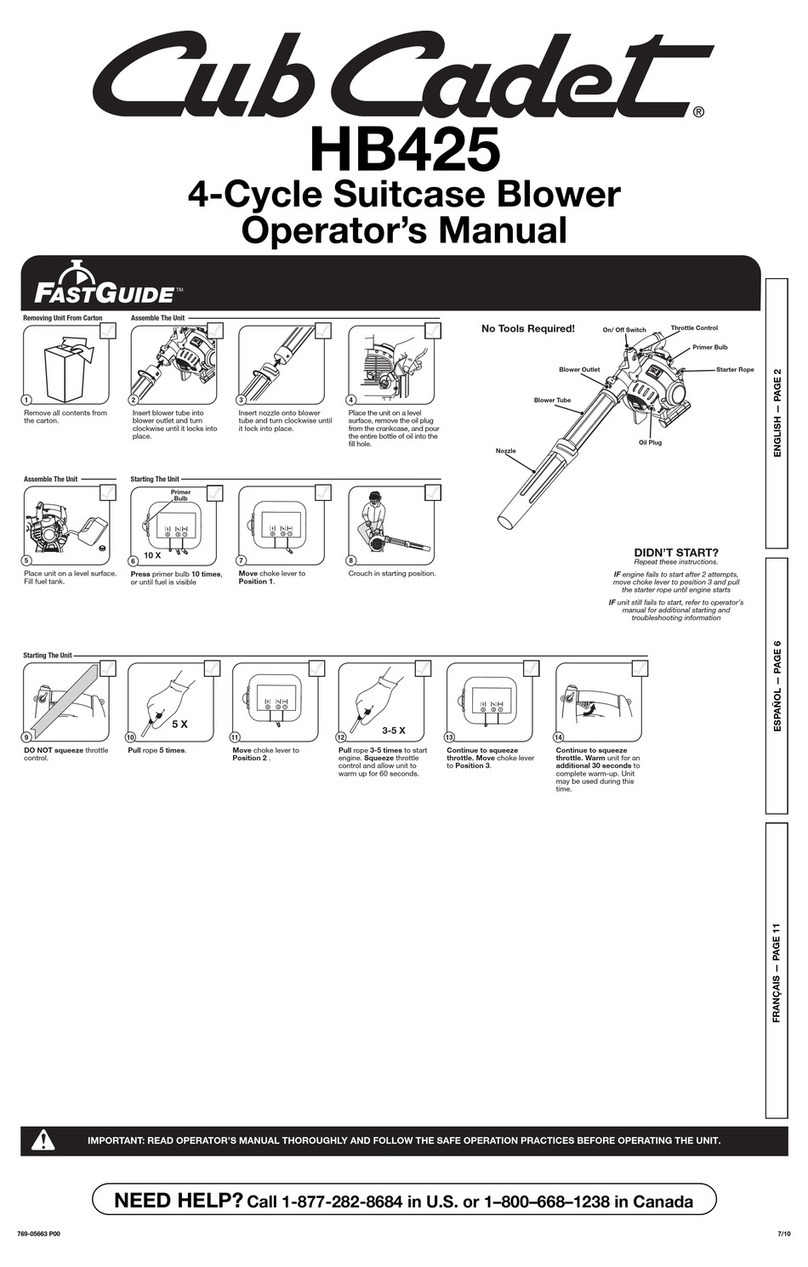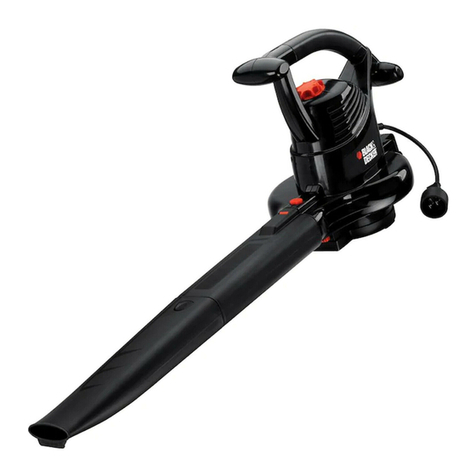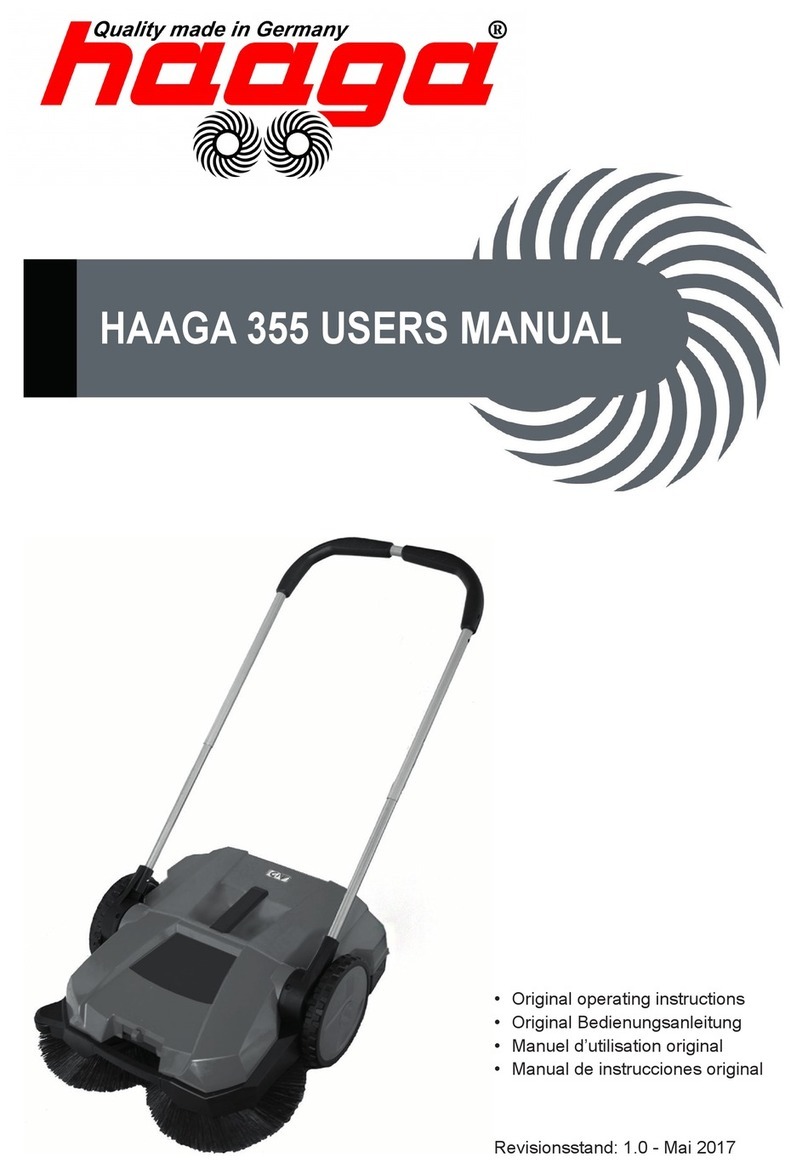TRANSPORTING LITHIUM BATTERIES
Transport the battery pack in accordance with
local and national provisions and regulations.
Follow all special requirements on packaging
and labelling when transporting batteries by a
third party. Ensure that no batteries can come
in contact with other batteries or conductive
materials while in transport by protecting
exposed connectors with insulating, non-
conductive caps or tape. Do not transport
battery packs that are cracked or leaking.
Check with the forwarding company for further
advice.
MAINTENANCE
WARNING
Use only original manufacturer’s
replacement parts, accessories, and
attachments. Failure to do so can cause
possible injury and poor performance, and
may void your warranty.
WARNING
Servicing requires extreme care and
knowledge and should be performed only by
a qualied service technician. For service,
bring the product to an authorised service
centre. When servicing, use only original
replacement parts.
■Do not make adjustments and repairs not
described in this manual. For other repairs,
contact an authorised service centre.
■After each use, clean the product with a
soft, dry cloth.
■Check all nuts, bolts, and screws at
frequent intervals for proper tightness to
ensure that the product is in safe working
condition. Any part that is damaged should
be properly repaired or replaced by an
authorised service centre.
■Bring the product to an authorised service
centre to replace damaged or unreadable
labels.
Clearing a blockage
■To reduce the risk of injury associated
with contacting rotating parts, always stop
the product, remove the battery pack, and
make sure all moving parts have come to a
complete stop.
■Remove the tubes to inspect for blockage.
Clear the tubes if required.
■Remove the debris collector bag. Check
that the bag adaptor is free from obstruction.
■Inspect the opening to the fan enclosure
and the tube to the debris bag for evidence
of a blockage. Remember, even though
the battery pack is removed, the fan or
mulching blades may move as you clear
any blockage. Keep fingers away from the
fan or mulching blades at all times.
■Do not attempt to remove the fan or
mulching blade. If it is necessary to remove
the fan or mulching blades, bring the
product to an authorised service centre.
■Reinstall the tubes and the debris collector
bag before installing the battery pack and
starting the product.
RESIDUAL RISK
Even when the product is used as prescribed,
it is still impossible to completely eliminate
certain residual risk factors. The following
hazards may arise in use, and the operator
should pay special attention to avoid the
following:
■Injury caused by vibration
–Always use the right tool for the job, use
designated handles and use the lowest
speed necessary to achieve the task.
■Hearing injury caused by exposure to noise
–Wear ear protection and limit exposure.
■Injury from flying objects from the blower
tube airflow if the debris collection bag is
not fitted or is damaged
–Wear eye protection at all times.
RISK REDUCTION
It has been reported that vibrations from
handheld tools may contribute to a condition
called Raynaud’s Syndrome. Symptoms may
include tingling, numbness, and blanching of
the ngers, usually apparent upon exposure
to cold. Hereditary factors, exposure to cold
and dampness, diet, smoking, and work
practices are all thought to contribute to the
development of these symptoms. There are
measures that can be taken by the operator to
possibly reduce the effects of vibration:
■Keep your body warm in cold weather.
When operating the product, wear gloves
to keep the hands and wrists warm.
■After each period of operation, exercise to
increase blood circulation.
■Take frequent work breaks. Limit the
amount of exposure per day.
If you experience any of the symptoms of this
condition, immediately discontinue use and
see your physician.
4



